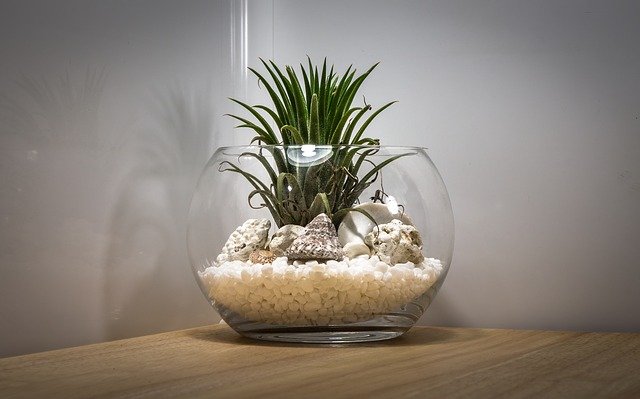
Terrariums have been gaining popularity. Their low maintenance has made them a favorable hobby in a world where almost everyone has a million things to do – at once.
For aquarists, terrariums may be a foreign concept, but those familiar with them can’t help but ask- Can I use my old fish tank/aquarium as a terrarium?
Yes, you can use an aquarium as a terrarium. You will, however, need to understand the various concepts that make a terrarium work. Considering the experience of creating suitable minute habitat for fish, you will pick up the skill fairly easily.

As mentioned above, there is a similarity between the two hobbies. Creating perfect miniature environments for the survival of whatever you will house in them.
Suppose you are not an aquarist and worried that this doesn’t apply to you. Two words: don’t be! Non-aquarists pick up used aquariums in yard sales every time. Some of the bests terrariums I have seen, ironically, have been built by them.
Understanding Terrariums
What is a terrarium?
It is a vivarium(enclosed container) that is used to house small land animals.
There is no limit to what you can keep in them as long as the size agrees. Animals kept in a terrarium include; Gecko, springtails, chameleon, tarantulas, isopods, beetles, turtles, salamanders, etc. You can also keep plants or fungi in a terrarium. The best terrariums have a blend of many of these.
There are two types of terrariums that one can make. These are open and closed terraria.
When setting up a terrarium, the idea is to replicate natural habitats as much as possible and fit all that in a tiny space.
They are mostly sealed though you can leave them open for air circulation. A lid that allows airflow is used to keep animals from coming out. How you set up yours depends on what you intend to keep. Different plants and animals require different conditions. These conditions are thus what inspire the design and build of terrariums.
With this basic knowledge of terrariums, we can now highlight the difference between an aquarium and a terrarium; how can we use one to build another?
What is the difference between Terrarium and Aquarium
The major and obvious difference between a terrarium and an aquarium is actually in their nomenclature.
One is dedicated to land(terra) life, while the other is all about life in water(aqua). Due to this distinctive aspect, a lot of structural and functional differences arise. It is quite fascinating how things, typically serving the same purpose, can be so different.
Their maintenance difference is far and wide. A terrarium is so simple to maintain. With little to no effort, you can enjoy the aesthetic benefits whilst it being in good condition. Unfortunately, aquarists were denied such privilege due to the requirements of aquatic life. To keep an aquarium going, one must be attentive to the need of fish and maintain good water quality for the basic functioning of the tank.
The low maintenance feature of terrariums has driven loads of aquarists into converting their tanks. I am not complaining; I feel bad that they won’t enjoy the joy of having an aquarium anymore.
For those who wish to combine the best of both hobbies; Is there a way to have a 2 in 1 edition of aquarium and terrariums?
Can I have a 2 in 1 version of an aquarium and terrarium?
Unfortunately not. You can have them separately, but you would need to figure out a way to provide darker areas for the aquarium and more light zones for the terrarium, so there’s enough oxygen in your fish tank and moisture from the soil.
For example, you could do something like installing some shelving in your house with moister dirt on one side of it that receives less natural sunlight than the other side. The problem with this is that during the winter months, plants will need artificial lighting to survive, while fish might do well without any extra lighting due to their photosynthesis capabilities which are stronger than those of ground-based plants. So any way you cut it, these types of animals don’t often get along nicely together as they require.